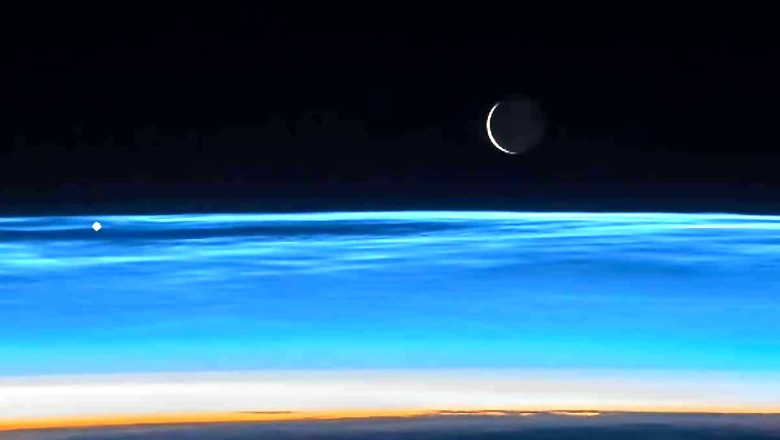
views
The National Aeronautics and Space Administration (NASA) is well-known for capturing and sharing some of the most stunning images of our universe. These images often leave space enthusiasts and the general public in awe. NASA’s social media accounts are filled with educational videos and breathtaking images that offer a glimpse into the wonders of Earth and space. In yet another post that they shared recently, NASA has clicked a picture of the moonrise taken from a unique vantage point within the International Space Station.
This image was captured by astronaut Matthew Dominick, who has been living on the International Space Station for about four months. The image has a crescent-shaped moon above the Earth’s atmosphere, with the planet appearing very similar to an endless expanse of ocean-blue water. The description provided by NASA points to the layers of orange and black underneath a horizontal band of blue that stretches across the center of the image. The crescent moon, white against the blackness of space, stands out beautifully.
In his description of the scene, astronaut Dominick mentioned, “A sliver of a moon rises out of noctilucent clouds and appears to look towards the horizon awaiting the imminent sunrise.”
Further, the caption of NASA’s post read, “Experiments aboard the ISS serve as the basis for much of the science needed to sustain life on another world. ISS research is laying a foundation for the Artemis missions to the Moon.”
“Image description: A crescent moon floats over the Earth’s atmosphere, which resembles ocean-blue water. Layers of orange and black appear underneath the horizontal band of blue stretching across the center of the image. The crescent moon is white and stands out against the blackness of space,” added NASA.
NASA had previously shared another striking image in February. It had both the Moon and Earth in a single frame, clicked from the International Space Station. In the image, the Moon was in a crescent phase, and the Earth appeared blue with faint white clouds in the atmosphere.
The space agency had explained that during the Moon’s waning crescent phase, most of the sunlight illuminates its far side, the side that cannot be directly seen from Earth. This phase is the last before the lunar cycle repeats with a new moon phase, during which the Moon is completely obscured from Earth’s perspective.
















Comments
0 comment